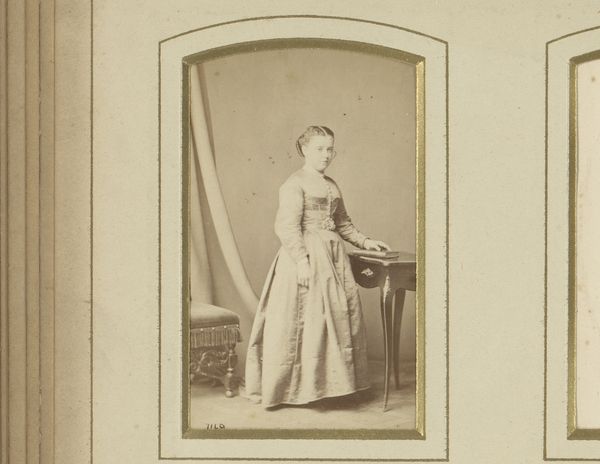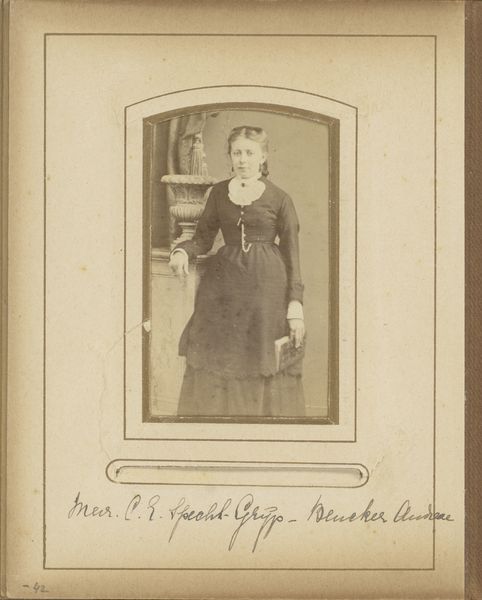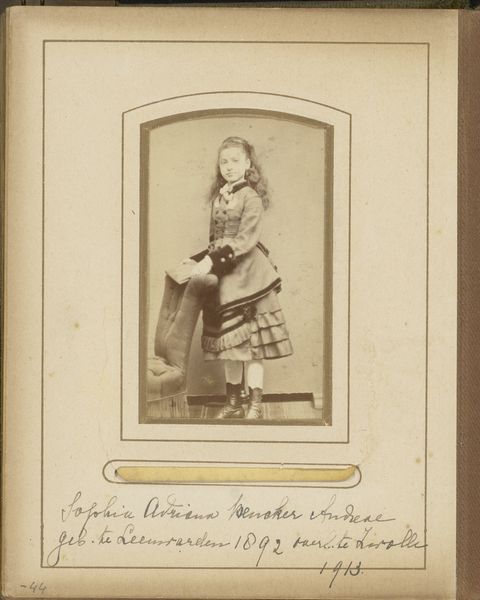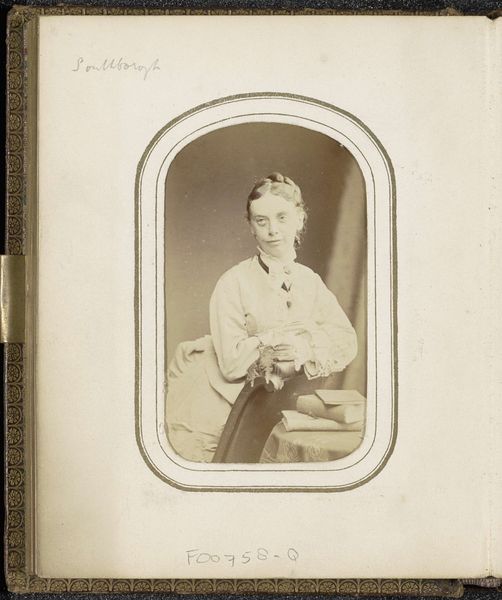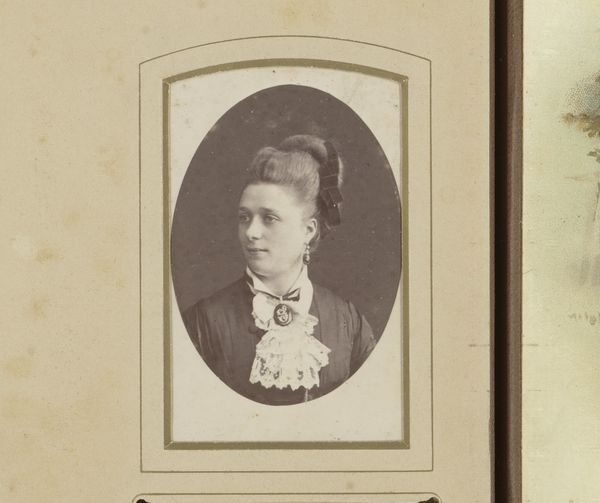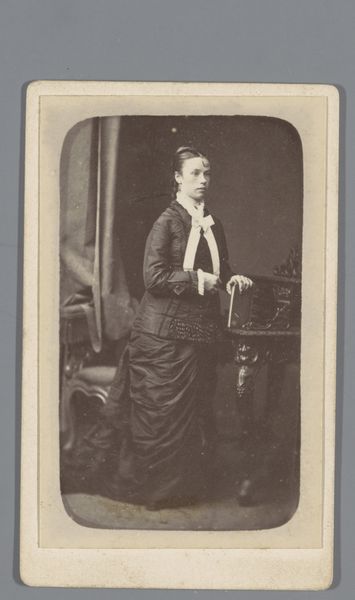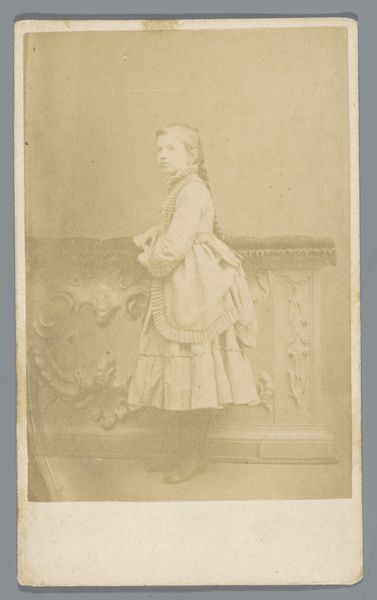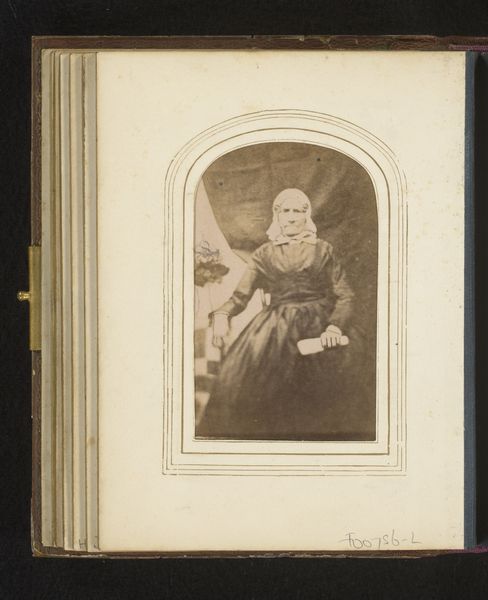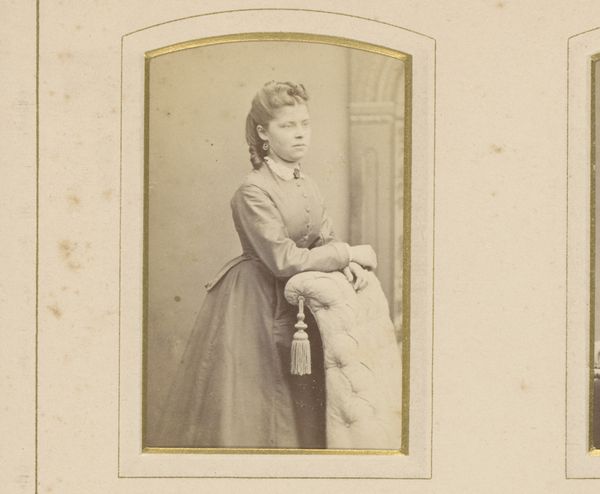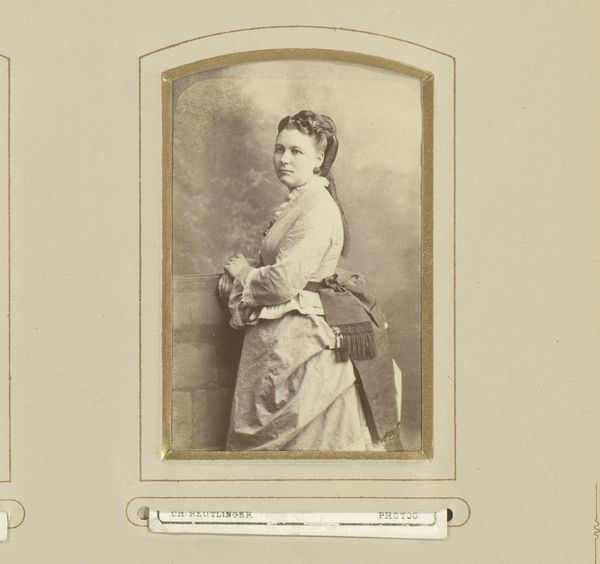
#
aged paper
#
toned paper
#
water colours
#
parchment
#
tea stained
#
coffee painting
#
19th century
#
watercolour illustration
#
golden font
#
watercolor
Dimensions: height 800 mm, width 450 mm
Copyright: Rijks Museum: Open Domain
Curator: Looking at this image, the word that springs to mind is "genteel." Editor: Indeed. What we're viewing is a portrait, likely dating from between 1860 and 1875, entitled "Portret van Meintje Beucker Andreae." It appears to be watercolor on parchment, giving it this aged, sepia tone. Curator: The tones certainly evoke a sense of nostalgia. I am drawn to the restrained colour palette; it speaks of refinement. Are those colours natural aging or a conscious aesthetic choice of the time? Editor: That’s an interesting point! The warm hues could be a product of age on the parchment itself, potentially affected by light and time, but tea and coffee staining was also fashionable during the period to create a specific tonal mood and artificial “aging.” Think of it as early photography filters—with political dimensions: cultivating nostalgic sentiments, and projecting status through an association with a distinguished past. Curator: Ah, cleverly curated aging as status symbol! That adds another layer of complexity. Is there symbolic importance to this photographic portrait, within the historical frame? Editor: Photographic portraits, which started to become quite popular during the middle of the 19th century with the expansion of the middle classes, marked a shift in the idea of self-representation and commemoration. Before this era, paintings were largely exclusive to the wealthy. Photography made the aspiration of having one's own "history" visually represented accessible to a much broader population. Curator: And the handwriting? Is that a stylistic trend, a personal addition or... ? Editor: A bit of both, probably. Handwritten annotations under images were common, adding personal context. The "golden font" attempts to make mundane information quite precious, don’t you think? That inscription helps us trace the portrayed—"Meintje Beucker Andreae"—offering a name, date, hinting to a place. These biographical elements turn this portrait into more than just an aesthetic representation, but rather an intimate fragment of 19th-century society. Curator: So, a layering of aesthetic trends and emergent social practice meeting on the level of individual aspiration… that’s such an intriguing intersection to think about through a portrait. It captures something about how historical forces operate, as translated into daily life. Editor: Exactly. Examining its place within image culture of the time adds layers to its meaning beyond aesthetics.
Comments
No comments
Be the first to comment and join the conversation on the ultimate creative platform.
